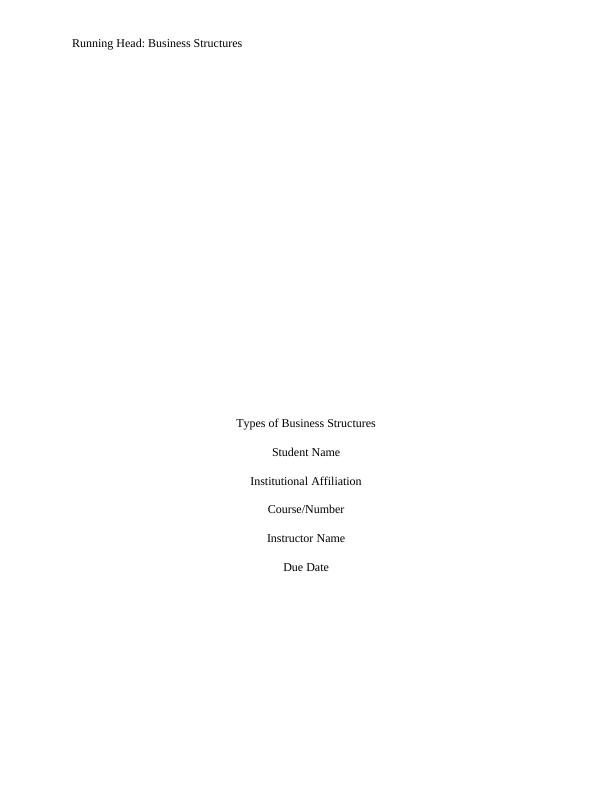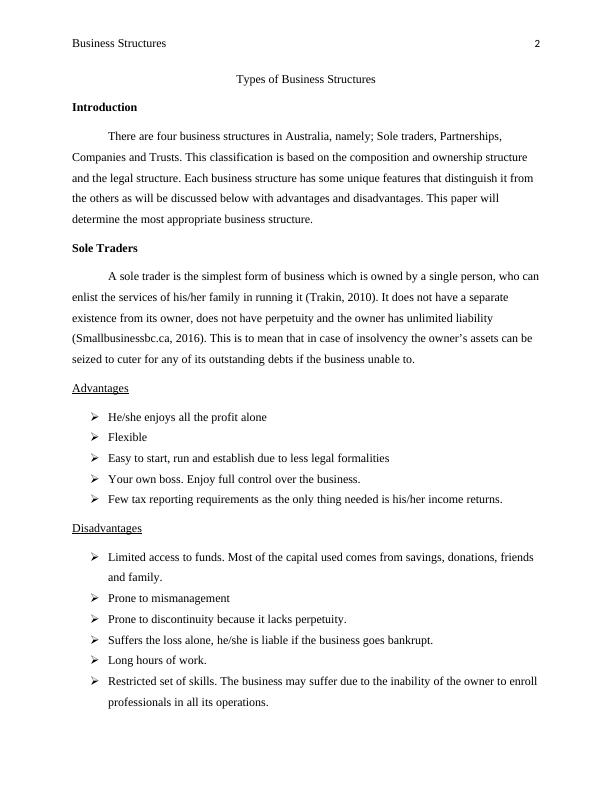Business Structures Assignment PDF
8 Pages1974 Words49 Views
Added on 2021-06-17
Business Structures Assignment PDF
Added on 2021-06-17
ShareRelated Documents
End of preview
Want to access all the pages? Upload your documents or become a member.
Business Entrepreneur: Types of Business Structures
|4
|853
|355
Understanding Business Organisation
|8
|1987
|98
Introduction to Business Law: Case Study on Business Structures
|12
|3026
|191
Financial Accounting Process for Partnership Business
|6
|987
|453
Choosing the Right Business Structure in Australia
|11
|3157
|282
Business Structures in Australia: Partnership and Company
|3
|811
|71



